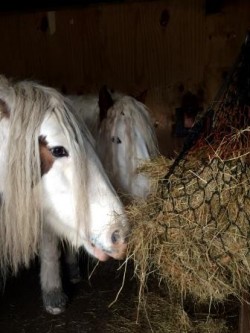Within education we are commonly advising our students’ to reflect on their experiences, to learn from those experiences to support their learning. It is easier to give rather than heed this advice, and perhaps we need to make sure we practice what we preach. All this came to mind when considering the change and developments facing my own work team. We were freshly formed as a smaller staff group, facing new approaches to delivering our work while at the same time continuing to deliver ‘work as normal’ for our students. It would have been easy to be lost in a fog of change and be confused as to what actions to take. I began to wonder if there could be a creative way to help our team to develop our professional relationships. On reflection the answer was obvious we needed to spend some time with some horses… I’ll explain.
The venue was Two Ash Stables, which specializes in Equine Assisted psychotherapy, and our host was Alexandra Graves, a psychotherapist and an equine specialist. Our aim was to consider our own internal communication processes and help us understand how we interact with other people to help develop effective team communication. At first we fell into the pattern of discussing work, marking, electronic systems and the usual work based team dialogue. Although we work as team, as academics our working practices essentially isolate us in our teaching rooms so any opportunity to be together in a space soon becomes dominated with discussion about systems and working practices.
This was an experiential and reflective workshop, with three horses and a mule, animals that were going to challenge our group dynamics and approach more than any of us expected. Our first task was to observe the horses and their behaviour, how they interacted with each other as a herd, the environment and ourselves. We identified the one that felt more like us and why, and then together discussed this and reflected how the horses interactions informed our personal and professional interactions with each other. Were the horses really like us or just a means by which we could share with the group our sense of identity? Either way we were sharing new information about each other.
 The first active challenge was to see how, as a team, we could work with the horses and get them to go over a range of obstacles, which needed really focused teamwork, especially when we couldn’t touch the horses. Suddenly effective communication and leadership were in order, the most stubborn of colleagues is nothing compared to a mule who doesn’t want to walk over a jump! The way you did get this to happen was simple clear communication and direct leadership. Were we learning something about ourselves and our workplace dynamics with these horses? It really appeared that way.
The first active challenge was to see how, as a team, we could work with the horses and get them to go over a range of obstacles, which needed really focused teamwork, especially when we couldn’t touch the horses. Suddenly effective communication and leadership were in order, the most stubborn of colleagues is nothing compared to a mule who doesn’t want to walk over a jump! The way you did get this to happen was simple clear communication and direct leadership. Were we learning something about ourselves and our workplace dynamics with these horses? It really appeared that way.
We continued in this vein with fresh challenges but each time our new equine friends challenged us to be clearer, more direct and reflective than we were when we ordinarily work as a team. We developed a greater awareness of communication strategies, about our individual strengths and how we interact with each other and contribute to the team. The experience also facilitated very open and in depth discussions about how we wanted to work together as a team especially in our new working environment. This discussion and reflection was illuminating our strengths and successes but also some of the challenges we face and the complexities of professional relationships. Could horses really be this helpful in team building?
For individuals the experiential and reflective nature of the engagement with the horses was a very powerful, emotional and moving experience and the environment provided a very deep reflective space. We learnt so much about each other on a personal and professional level and identified strengths in each other. The value of working with the horses in a different space enabled us to develop our relationships, help and support each other and recognise the collaboration and understanding that we showed each other as the key to continuing to develop effective team communication.
By the end of the session our conversations had moved away from discussions about work systems and now focused on conversations about our individual and group strengths and the way we could support each other. This focus on personal support has continued into our team meetings and has developed group cohesion and the way we work together as a group, even if we are now horse free.
You may be facing similar challenges and I can’t promise a day with 3 horses and a mule will address all your challenges but I do know I am now part of a more considered and reflective team and our equine friends facilitated this. It is commonly taken to be a bad thing to have an elephant in the room but from experience I know that a horse can help you to heed your own advice to reflect on your professional practice.
Mandy Hatton
Dr Mandy Hatton is a Senior Lecturer in Childhood Studies in Sheffield Institute of Education

Leave a Reply